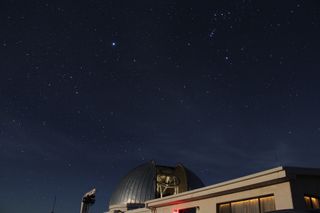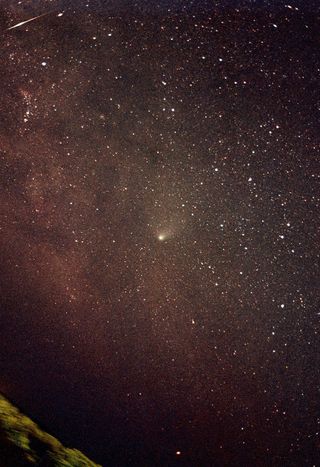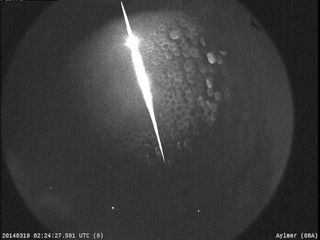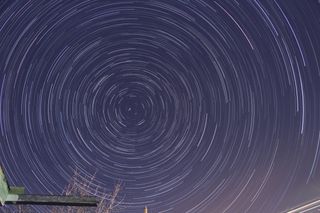Best Night Sky Photos of the Week: March 22, 2014
Shooting the Stars Over Arizona's Kitt Peak (Photos)

This week, I spent my first night under the stars at Kitt Peak in southern Arizona, and I tried to take some pictures of bright spots in the sky. [Here’s what happened.]
The Magnificent Moon: Amateur Astronomer Captures Stunning Photo of Lunar Surface

Night sky photographer Miguel Claro of Lisbon, Portugal, reveals stunning images showing craters of the moon in March. [See how he did it here.]
Wow! Dazzling Meteor Streaks Over Maine Lighthouse in Spectacular Photo

Avid astrophotographer Mike Taylor captured this amazing image of the Milky Way galaxy, planet Venus and dazzling meteor on March 4, 2014. [See how he did it.]
Capturing Halley's Comet: An Astronomy Tale

Victor Rogus has spent decades as an amateur astronomer, building many of his own telescopes, but his passion owes its drive to his early experiences with Halley's Comet. [Full Story]
Brilliant Fireball Over Canada Sparks Meteorite Hunt (Video)

Researchers at Western University are seeking meteorites in the wake of a basketball-sized meteor that created a fireball in southwestern Ontario. [Full Story]
Airplane Soars Across the Full 'Worm' Moon in Awesome Stargazer Photo

Photographer Matt Hartman captured this stunning image of an airplane streaking across a huge Full 'Worm' Moon on Sunday (March 16) as full moon of March lit up the Los Angeles sky. [Full Story]
See the World Spinning ’Round

Astrophotographer Tim Crippin sent in an image of star trails over Medford, Oregon. He writes in an e-mail message to Space.com that he "took about 200 shots to create this image using a Canon T3i and a 18mm lens at f/4.5 … camera settings were ISO 400, 30 second exposures." Image submitted March 12, 2014. [Full Story]
Get the Space.com Newsletter
Breaking space news, the latest updates on rocket launches, skywatching events and more!
Got Milk?

The Milky Way galaxy appears to arc through the clear night sky in this panoramic image taken at the European Southern Observatory’s Paranal Observatory in Chile. Those living in crowded, light-polluted cities rarely get the chance to enjoy such a sight. The Ancient Greeks thought that our home galaxy, as it appeared in the sky, resulted from the work of the gods. Their legends told that this cloudy streak represented the breast milk of Hera, wife of Zeus. The Ancient Greeks also created the name “Milky Way.” The Hellenistic phrase Γαλαξίας κύκλος, pronounced galaxias kyklos, means “milky circle”, providing the root for the modern name. ESO Photo Ambassador Gabriel Brammer took this image. At the right side, an unidentified astronomer visiting Paranal stands and admires the view with a bit of a blurry head. [Full Story]
Join our Space Forums to keep talking space on the latest missions, night sky and more! And if you have a news tip, correction or comment, let us know at: community@space.com.

Space.com is the premier source of space exploration, innovation and astronomy news, chronicling (and celebrating) humanity's ongoing expansion across the final frontier. Originally founded in 1999, Space.com is, and always has been, the passion of writers and editors who are space fans and also trained journalists. Our current news team consists of Editor-in-Chief Tariq Malik; Editor Hanneke Weitering, Senior Space Writer Mike Wall; Senior Writer Meghan Bartels; Senior Writer Chelsea Gohd, Senior Writer Tereza Pultarova and Staff Writer Alexander Cox, focusing on e-commerce. Senior Producer Steve Spaleta oversees our space videos, with Diana Whitcroft as our Social Media Editor.











